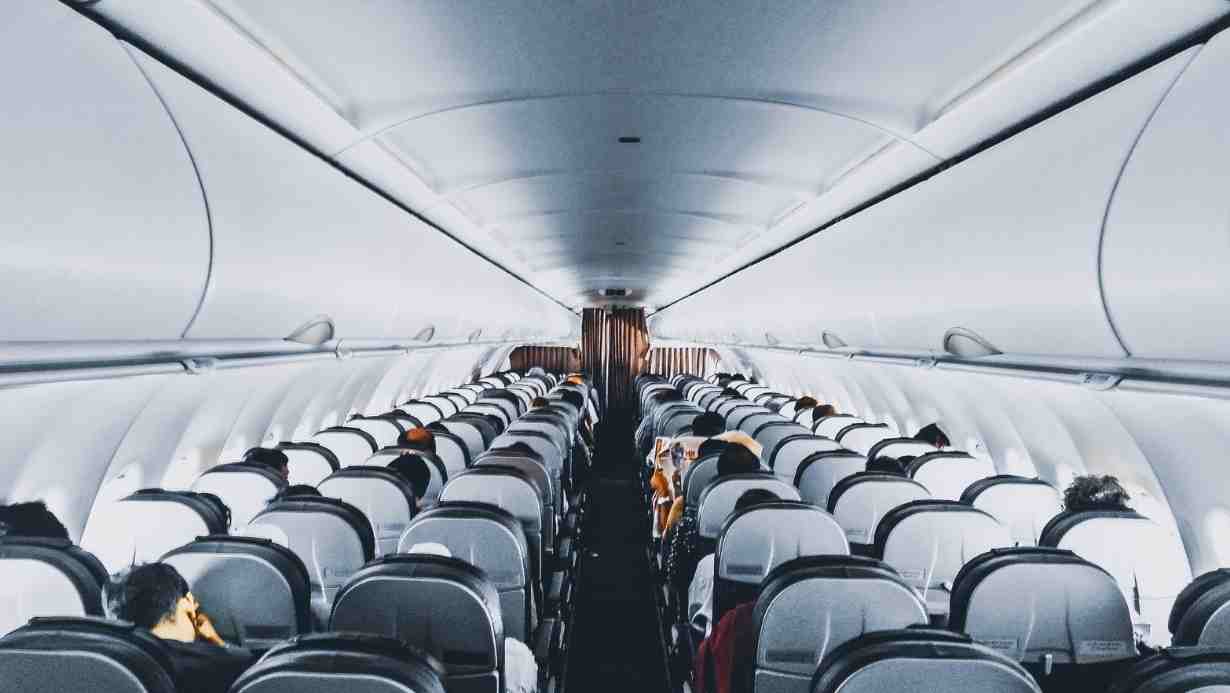10 Ways to Enhance Comfort on Long Flights: Expert Travel Tips

Are you planning a long-haul journey soon and searching for valuable insights to make your flight as comfortable as possible? If you’re gearing up for an adventure or a business trip that involves those seemingly endless hours in the air, you’re in the right place.
In this guide, we’ll unveil a treasure trove of travel tips for long flights, helping you maximize your comfort and make the most of your time in the skies. From choosing the ideal seat to staying hydrated and moving around, we’ve got you covered with practical advice that will ensure your journey is not just tolerable but a truly enjoyable experience.
Tip 1: Choose the Right Seat

Selecting the right seat on a long flight can make a world of difference in your overall comfort and enjoyment of the journey. Here’s why seat selection is crucial and some guidance on seat preferences:
Importance of Seat Selection for Comfort
Choosing the right seat is not just a matter of personal preference; it can have a significant impact on your in-flight experience. Here’s why it’s so important:
- Legroom: Different seats offer varying degrees of legroom. This is especially vital for long flights where you might be sitting for several hours. More legroom means you can stretch your legs and avoid feeling cramped.
- Accessibility: Seat selection can impact how easily you can access essential amenities during the flight. Aisle seats, for example, provide easy access to the aisle, making it more convenient to get up, stretch, or visit the restroom without disturbing other passengers.
- View: Window seats provide a view of the sky and scenery, which can be a source of entertainment and wonder during your flight. However, if you plan to sleep or don’t enjoy looking out the window, this might not be your preference.
- Privacy: Some seats offer more privacy than others. For instance, the bulkhead seats, which are the first row in each section, have no seats in front of them, offering extra legroom and more personal space.
- Noise Level: Seats near the engines or wings can be noisier due to the mechanical sounds of the plane. If you prefer a quieter atmosphere, you might want to choose seats toward the front or back of the cabin.
Guidance on Seat Preferences
Now, let’s explore some common seat preferences and their pros and cons:
- Aisle Seats: Aisle seats are excellent if you prefer easy access to the aisle. They allow you to stretch your legs, stand up, and move around without disturbing fellow passengers. However, you may be bumped by the serving carts or other passengers passing by.
- Window Seats: Window seats offer a great view, and you have a solid wall to lean against for sleeping. You won’t need to get up for others, but you might feel a bit confined if you don’t like to be wedged between the wall and the seat.
- Bulkhead Seats: Bulkhead seats provide extra legroom because there are no seats in front of you. They’re excellent for tall passengers who need more space, but you might have to stow your belongings during take-off and landing.
- Emergency Exit Row Seats: These seats often have ample legroom, making them a top choice for those who value comfort. However, they come with the responsibility of being willing and able to assist in case of an emergency.
- Middle Seats: Middle seats are usually the least desirable, as they offer less privacy and may require you to ask your seatmates to move if you need to get up. It’s best to avoid them whenever possible.
Tip 2: Pack Smart and Light
Packing for a long flight can be a bit of an art form. To ensure a comfortable journey, it’s essential to pack both smartly and lightly. Let’s delve into the details:
Advice on packing essentials and minimizing luggage
- Essentials First: Begin by making a list of your travel essentials. These are items you can’t do without, like passports, tickets, medications, and travel documents. Make sure these go into your carry-on bag.
- Versatile Clothing: Pack versatile clothing that can be mixed and matched to create different outfits. Neutral colors and layers work well for this purpose. You can also consider clothing that is quick-drying, wrinkle-resistant, and odor-repelling.
- Travel-Friendly Toiletries: Instead of full-sized toiletries, opt for travel-sized or sample-sized versions. This reduces the weight and space taken up by your toiletry bag. Remember to adhere to airline regulations regarding liquids and gels.
- Digital Devices and Chargers: Bring the essential digital devices you’ll need for entertainment or work, but avoid overloading on gadgets. Don’t forget chargers and power banks to keep your devices running.
- Adapters and Converters: If you’re traveling internationally, pack the necessary power adapters and voltage converters to ensure your devices can be charged at your destination.
- Footwear: Choose comfortable, versatile shoes that are suitable for the activities you have planned at your destination. It’s often best to wear your bulkiest pair on the plane to save space in your luggage.
- Travel Accessories: Essential travel accessories include a money belt or neck pouch for securing valuables, a universal travel adapter, and any specific accessories needed for your destination, such as swimwear or hiking gear.
Benefits of packing light for convenience
Packing light offers several benefits that can significantly enhance your long flight experience:
- Easier Mobility: Lighter luggage is more manageable, whether you’re navigating through the airport, getting on and off the plane, or taking public transportation at your destination. You won’t struggle with heavy bags or risk straining your back.
- Avoiding Checked Bag Fees: Many airlines charge for checked luggage. By packing light and efficiently, you can often avoid these fees, saving you money.
- Faster Security Checks: With less luggage to scan and inspect, you’ll breeze through airport security checks more quickly, reducing stress and wait times.
- Simplified Packing and Unpacking: When you pack light, you’ll find it easier to locate items in your luggage, and unpacking at your destination will be less of a chore. This can lead to a more organized and less stressful travel experience.
- Flexibility: Light packing gives you the freedom to change your plans or take advantage of unexpected opportunities. You won’t be weighed down by unnecessary items, and you can more easily adapt to varying situations.
- Avoiding Baggage Loss: Fewer checked bags mean a lower risk of lost or delayed luggage. With everything in your carry-on, you have more control over your belongings.
Tip 3: Dress Comfortably

When embarking on a long flight, your choice of clothing is more important than you might think. Dressing comfortably can significantly impact your in-flight experience. Here’s why and how to do it:
Why Dress Comfortably Matters:
- Improved Circulation: Comfortable clothing that doesn’t constrict your movements helps maintain good blood circulation during the flight. This is especially important during long hours of sitting.
- Better Sleep: Loose-fitting and comfortable clothes can aid in sleeping during the flight. You’ll avoid the discomfort of tight waistbands or itchy fabrics that can keep you awake.
- Flexibility: In comfortable attire, you can easily stretch and move around without feeling restricted. This can help prevent muscle stiffness and discomfort.
- Climate Adaptability: Planes can have varying temperatures, and dressing in layers allows you to adapt to the climate on board. You can add or remove layers as needed.
How to Dress Comfortably:
- Loose Clothing: Choose loose-fitting clothing made from breathable, natural fabrics like cotton or bamboo. Loose-fitting pants and tops are ideal for comfort.
- Layering: Layering is key to adapting to temperature changes on the plane. Start with a comfortable base layer and add or remove as necessary.
- Footwear: Wear comfortable, slip-on shoes. This makes it easy to slip them off during the flight and helps with circulation.
- Avoid Accessories: Skip accessories like belts, heavy jewelry, or tight scarves that could cause discomfort during the flight.
- Compression Socks: Consider wearing compression socks to promote healthy circulation and reduce the risk of swelling in your legs.
- Eye Mask and Earplugs: If you plan on sleeping, having an eye mask and earplugs in your carry-on can help create a peaceful environment even if the cabin lights are on or passengers are chatting.
Tip 4: Stay Hydrated
Staying hydrated during a long flight is crucial for your comfort and well-being. Here’s why it’s so important and how to do it effectively:
Why Staying Hydrated Matters:
- Dehydration: The air inside an airplane cabin is often dry, which can lead to dehydration. Dehydration can cause fatigue, dry skin, and even headaches.
- Circulation: Proper hydration helps maintain healthy blood circulation and minimizes the risk of blood clots, which can be a concern during long flights.
- Jet Lag: Staying hydrated can also help reduce the effects of jet lag, as well-hydrated bodies adjust to new time zones more efficiently.
How to Stay Hydrated:
- Water: Drink plenty of water during the flight. It’s the best way to stay hydrated. Aim to sip water regularly throughout the journey.
- Avoid Dehydrating Beverages: Limit your intake of alcoholic drinks and caffeine, as these can dehydrate you. Water is the best choice.
- Moisturize: Apply a hydrating lotion to your skin to prevent it from drying out. A small bottle of moisturizer can be carried in your carry-on.
- Fruits and Vegetables: Eat fruits and vegetables with high water content, like cucumber, watermelon, and oranges, which can contribute to your hydration.
- Avoid Salty Snacks: High-sodium snacks can make you thirstier. Opt for healthier, low-sodium options.
By dressing comfortably and staying hydrated during your long flight, you’ll be better prepared to face the challenges of air travel. Comfortable clothing and proper hydration will not only enhance your in-flight experience but also help you arrive at your destination feeling refreshed and ready to explore.
Tip 5: Move and Stretch
Maintaining mobility and flexibility during a long flight is crucial for your comfort and health. Here’s why it’s essential and how to do it:
Why Moving and Stretching Matters:
- Circulation: Sitting for extended periods can lead to reduced circulation and the risk of blood clots, known as deep vein thrombosis (DVT). Moving and stretching can help prevent this.
- Preventing Muscle Stiffness: Frequent movements and stretches prevent your muscles from becoming stiff and uncomfortable during the flight.
- Back Health: Stretching your back and legs can reduce back pain and discomfort caused by prolonged sitting.
How to Move and Stretch:
- In-Seat Exercises: Simple exercises that can be done while seated include ankle circles, foot pumps, and knee lifts. These promote circulation.
- Stand Up and Walk Around: Whenever the seatbelt sign is off, take the opportunity to walk up and down the aisle. This provides a more extensive stretch and helps prevent DVT.
- Deep Breathing: Deep, controlled breaths can help relax your muscles and improve circulation. Try inhaling deeply and exhaling slowly.
- Yoga and Stretches: You can do discreet stretches in your seat, such as neck rolls and shoulder shrugs. Yoga poses like seated twists can also be helpful.
Tip 6: Bring Entertainment

Entertainment is an essential aspect of a comfortable long flight. Here’s why and how to make the most of it:
Why Entertainment Matters:
- Passing the Time: Long flights can feel monotonous, and boredom can make the journey seem even longer. Entertainment helps pass the time more quickly.
- Distraction: Engaging entertainment can distract you from discomfort, turbulence, or other inconveniences during the flight.
- Relaxation: Enjoying a movie, book, or music can help you relax, reducing stress and anxiety associated with flying.
How to Bring Entertainment:
- Books: Pack a captivating book, e-book, or audiobook to immerse yourself in a story or gain knowledge.
- Movies and TV Shows: Load your tablet or smartphone with movies or TV shows. Many airlines offer in-flight entertainment, but having your options ensures you’ll have something you enjoy.
- Music and Podcasts: Create playlists or download your favorite tunes and podcasts. They can help you relax and pass the time.
- Digital Devices: Ensure your devices are fully charged and consider bringing a power bank or charger for longer flights.
Tip 7: Eat Mindfully
Eating mindfully during a long flight is essential for your comfort and overall well-being. Here’s why it’s important and how to do it:
Why Eating Mindfully Matters:
- Digestive Comfort: Overeating or consuming heavy, greasy foods can lead to digestive discomfort during the flight. Eating mindfully helps prevent this.
- Energy Levels: Proper nutrition can help maintain your energy levels and avoid feeling sluggish during the journey.
- Hydration: Certain foods can contribute to dehydration, so mindful eating also ties into staying adequately hydrated.
How to Eat Mindfully:
- Healthy Snacks: Pack healthy snacks like nuts, granola bars, or dried fruits to nibble on throughout the flight. This can prevent excessive hunger and poor food choices.
- In-Flight Meals: If the flight includes meals, choose options that are not overly heavy or greasy. Inform the airline of any dietary restrictions or preferences when booking your ticket.
- Portion Control: Be mindful of portion sizes, especially with in-flight snacks. Overeating can lead to discomfort.
- Stay Hydrated: Drink water regularly to stay hydrated, and consider choosing water over other beverage options during the flight.
By moving and stretching, bringing entertainment, and eating mindfully, you can make your long flight significantly more comfortable. These strategies help pass the time, reduce discomfort, and promote relaxation during your journey.
Tip 8: Get Some Rest
Getting quality rest during a long flight is crucial for your comfort and overall well-being. Here’s why it’s important and how to achieve it:
Why Getting Rest Matters:
- Jet Lag Reduction: Quality sleep during a long flight can help reduce the effects of jet lag, making it easier to adjust to your destination’s time zone.
- Physical Comfort: Rest allows your body to relax and recover from the stress of travel, reducing muscle fatigue and stiffness.
- Mental Well-being: Sleep helps refresh your mind, reduce stress, and enhance your overall mood during the journey.
How to Get Some Rest:
- Neck Pillows: A comfortable neck pillow can support your head and neck, making it easier to doze off. Inflatable and memory foam neck pillows are popular choices.
- Eye Masks and Earplugs: These accessories can help block out light and noise, creating a more conducive environment for sleep, even if the cabin lights are on or passengers are talking.
- Seat Recline: If you have a reclining seat, use it to adjust to a more comfortable sleeping position. Be considerate of the passengers behind you, and recline gradually to avoid surprising them.
- Stay Hydrated: Dehydration can disrupt sleep, so ensure you’re drinking enough water. Avoid excessive caffeine and alcohol, as they can interfere with your sleep.
- Set Sleep Schedule: If you’re crossing multiple time zones, try to adjust your sleep schedule to align with your destination’s time zone. If it’s nighttime at your destination, try to sleep on the plane.
Tip 9: Stay Fresh
Staying fresh during a long flight can enhance your comfort and overall experience. Here’s why it’s important and how to do it:
Why Staying Fresh Matters:
- Comfort: Staying clean and fresh can significantly improve your comfort, especially during a long journey.
- Personal Well-being: Feeling fresh can boost your morale and confidence during travel, preventing you from feeling lethargic and uncomfortable.
- Consideration for Others: Being mindful of personal hygiene is also a considerate gesture towards your fellow passengers.
How to Stay Fresh:
- Travel-Sized Toiletries: Pack travel-sized toiletries in your carry-on bag. Essentials include toothpaste, a toothbrush, deodorant, and face wipes.
- Change of Clothes: Consider packing a change of clothes, including fresh underwear, to change into before landing.
- Face Mist or Moisturizer: A quick spritz of face mist or a small amount of moisturizer can help refresh your skin during the flight.
- Breath Fresheners: Chewing gum or using breath fresheners can help you maintain fresh breath throughout the flight.
Tip 10: Be Mindful of Time Zones
Being mindful of time zones during and after a long flight is essential to reduce the effects of jet lag and ensure a smoother transition to your destination’s local time. Here’s why it matters and how to do it:
Why Being Mindful of Time Zones Matters:
- Jet Lag Reduction: Adapting to your destination’s time zone can reduce the severity and duration of jet lag.
- Synchronization: Aligning your daily activities with local time can help you make the most of your trip and adjust to your new surroundings more quickly.
How to Be Mindful of Time Zones:
- Adjust Your Schedule: A few days before your flight, gradually adjust your sleep and meal times to match the time zone of your destination. This can help your body start adapting.
- Stay Hydrated: Drink water regularly to help your body adjust to the new time zone more efficiently.
- Avoid Alcohol and Caffeine: These substances can interfere with your body’s ability to adjust to a new time zone, so consume them in moderation or avoid them.
- Natural Light: Exposure to natural light can help reset your internal body clock. Spend time outdoors during the day at your destination.
By getting quality rest, staying fresh, and being mindful of time zones, you can enhance your comfort and well-being during your long flight and ensure a smoother transition to your destination’s local time. These strategies help you arrive at your destination feeling more refreshed and ready to explore.
Conclusion
Embarking on a long flight can be a challenging experience, but with the right strategies and preparations, it can become a much more comfortable and enjoyable journey. The ten tips discussed in this article offer practical solutions to common issues travelers face during extended flights. From choosing the right seat to adapt to your personal preferences, dressing comfortably, and staying hydrated, to maintaining mobility and ensuring you have entertainment to pass the time, and eating mindfully to avoid discomfort – each tip contributes to a more pleasant travel experience.
Getting rest and staying fresh during the flight are essential aspects of maintaining your comfort and well-being, allowing you to arrive at your destination in a more positive and refreshed state. Being mindful of time zones is the final piece of the puzzle, enabling you to minimize the effects of jet lag and make the most of your time at your destination.
How much did you like Our detailed Travel Tips for long Flights: 10 Tips to Make Your Trip More Comfortable? Review Also, please share these Blogs with your friends on social media.
Recommended

Meet David Hoper, a passionate travel Blog writer with 7+ years of experience in travel content. Through his exemplary storytelling and engaging narratives, he shares his experiences and brings destinations to life. With a keen eye for detail and a love for exploration, he has cultivated a diverse portfolio of travel blogs that inspire and inform readers worldwide.









